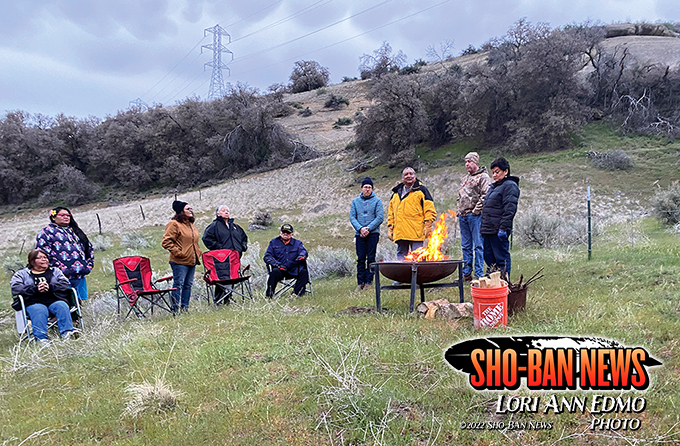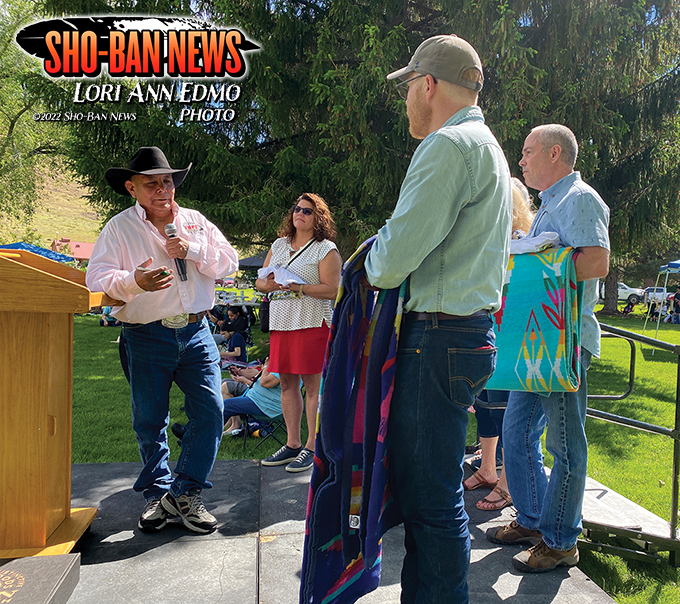Landowner returns cultural site to Boise Valley tribes

Blessing of the Dry Creek Rockshelter site in late April.
By LORI ANN EDMO
Sho-Ban News
BOISE — A significant cultural site that includes artifacts and remains of original Boise Valley people is being returned to the Boise Valley tribes thanks to landowner Tom Terteling.
“My family is honored to have been the caretaker of this site for the past 70+ years,” he said. “In recognizing how historically important the site is, we intend to donate the artifacts and the approximately 40 acres to the local five tribes.”
Terteling said it has been educational and rewarding these past few months and “we are excited to move ahead with the evaluation and ultimate goal of the donation.”
Erick Robinson, Boise State University archaeology professor, is instrumental in working with Terteling to obtain the donation. He said the Dry Creek Rockshelter site was excavated by students from Boise State University in 1974 and 1975. The excavators reported nine different human occupations of the rockshelter starting 4000 years ago and ending 1000 years ago.

Landowner Tom Tertelling and BSU Archaeology Professor Erick Robinson are honored at the
ROBVP event on June 10.
Although two burials were reported at the site, the excavators interpreted the site as a hunting camp and proposed that it was one of the most important sites for understanding the early entry of bow and arrow technology into western North America. The site was nominated to the National Registry of Historic Places in 1991.
Robinson said recent work by BSU has produced radiocarbon dates showing human use of the rockshelter from 6000 years ago. A few artifacts suggest that the site could have been used as early as 10,000 years ago. “This recent work has also shown how the excavators misinterpreted the site as a hunting camp; from at least 6000 to 2000 years ago it was used as a caching location for weapons and bones for marrow and grease extraction, and around 2000 years ago burials started to be interred at the site,” he said. “All these factors contribute to making this one of the most important archaeological sites in the state of Idaho.”
Shoshone-Paiute Tribal Chairman Brian Thomas said, “When we get opportunities like this to protect our resources – cultural funerary objects remains it is very important to all tribes because we have an offer coming from a non-Native to return ancestral lands,” noting it’s very respectful to Native Americans.
He said respectful because it comes from a private landowner and a piece of property that is priceless to our people. “I would like to say thank you with many blessings to his family – this deeded property to us the Boise Valley people.”
Terteling, his wife Julia and Robinson were presented gifts at the Return of the Boise Valley People event June 10 at Eagle Rock Park in Boise.
The 40-acres of land will be placed in a land conservancy trust in the name of the original Boise Valley tribes – Burns Paiute, Confederated Tribes of Warm Springs Paiute Band, Fort McDermitt Paiute-Shoshone, Shoshone-Bannock Tribes and the Shoshone-Paiute Tribe.





